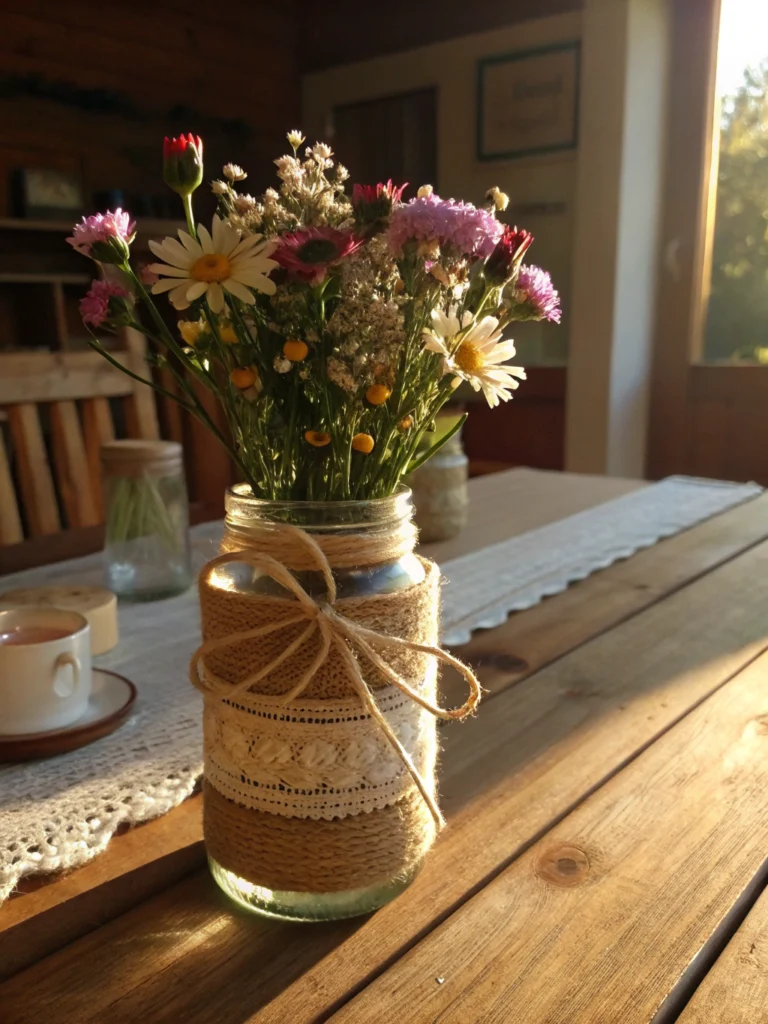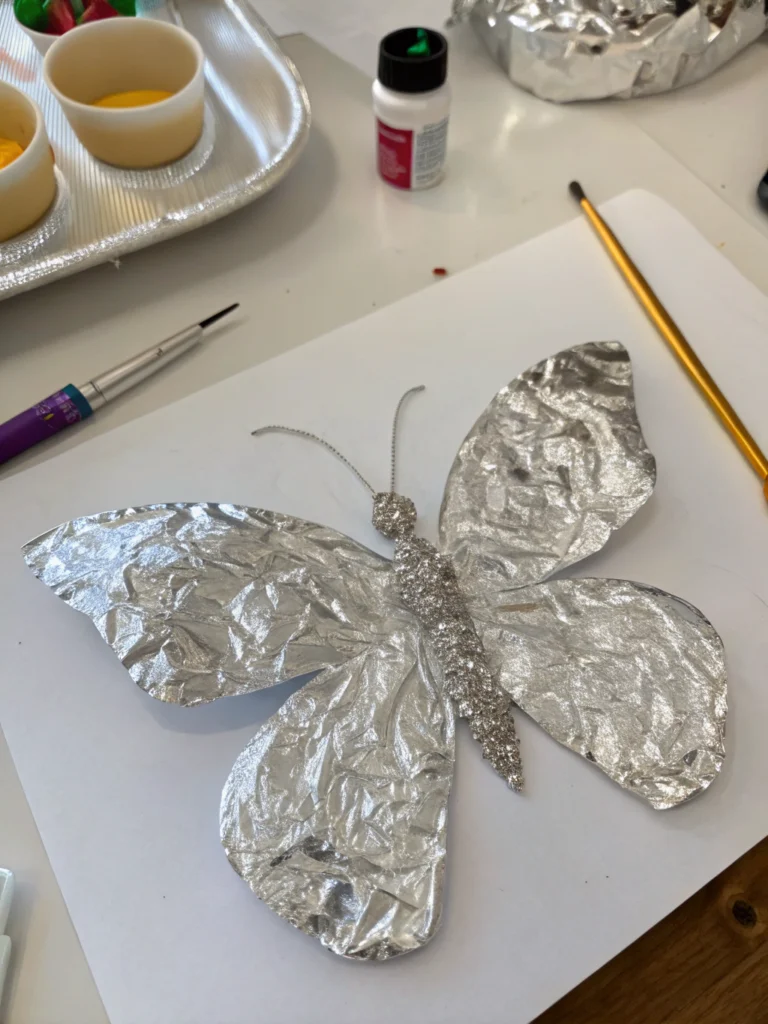Introduction
Are you tired of seeing perfectly good “junk” pile up, wondering if there’s a better destiny for it than the landfill? You’re not alone! Many home improvement enthusiasts like us see potential where others see trash. That’s where the magic of creative reuse art projects comes in. This isn’t just about being eco-friendly; it’s about unleashing your inner artist and transforming everyday discards into stunning, unique pieces that tell a story. Forget expensive art supplies; your next masterpiece might be hiding in your recycling bin!
We’re diving deep into the world of upcycled creativity, offering you seven inspiring ideas to get you started. Whether you’re looking for “Creative reuse art projects inspiration, Best creative reuse art projects for beginners, How to start creative reuse art projects” or just a fun way to spend a weekend, you’re in the right place. Let’s turn trash into treasure!
Table of Contents
What You’ll Need for Your Creative Reuse Art Projects Journey
Before you embark on these exciting creative reuse art projects, it’s good to have a basic toolkit and a mindset ready for experimentation. While each project will have specific material needs (which we’ll detail), here’s a general list of supplies that often come in handy for upcycling adventures. Think of this as your “creative reuse command center” starter pack!
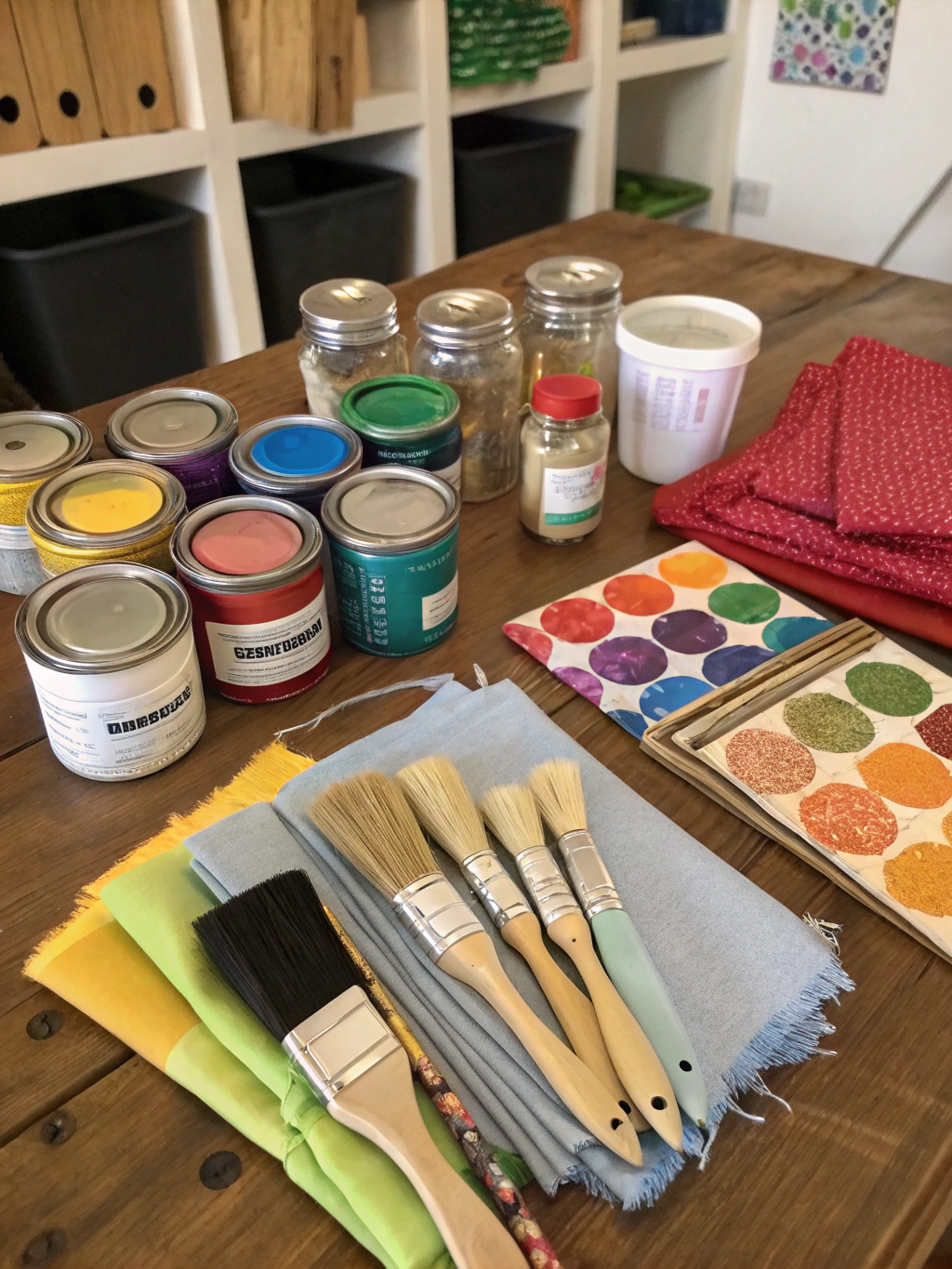
*Caption: Gather these common tools and materials to kickstart your creative reuse art projects.*
Core Materials & Tools: Creative Reuse Art Projects
- Adhesives: A good variety, including strong craft glue (like E6000), hot glue gun and sticks, Mod Podge (for decoupaging), and wood glue.
- Cutting Tools: Sharp scissors, a craft knife (X-Acto style) with extra blades, and possibly a rotary cutter and mat for fabric or paper. For tougher materials, tin snips or a small hand saw might be needed.
- Paints & Brushes: Acrylic paints in various colors, spray paint (especially primer), and a selection of paintbrushes (fine detail to larger flat brushes).
- Fasteners & Fixings: Screws, nails, staples (and a staple gun), wire, twine, and ribbon.
- Measuring & Marking Tools: Ruler or measuring tape, pencil, permanent markers.
- Safety Gear: Safety glasses, gloves (especially when working with sharp objects or strong chemicals), and a dust mask if sanding or spray painting.
- Cleaning Supplies: Old rags, rubbing alcohol (for cleaning surfaces), sandpaper (various grits).
- Your “Trash” Stash: This is the most important part! Start collecting items like:
- Glass jars and bottles
- Tin cans
- Old magazines, newspapers, and books
- Fabric scraps (old clothes, linens)
- Plastic containers and bottle caps
- Wine corks
- Broken jewelry
- Cardboard boxes and tubes
- Old CDs/DVDs
- Wood scraps
Remember, the beauty of creative reuse art projects lies in resourcefulness. Don’t feel you need to buy everything new; look around your home first! Many DIY enthusiasts find that searching for “Creative reuse art projects inspiration, Best creative reuse art projects for beginners, How to start creative reuse art projects” online, like on sites such as Sum of their Stories, can spark ideas for using what you already have.
Inspiring Idea #1: Tin Can Luminaries Creative Reuse Art Projects
Transform humble tin cans into enchanting outdoor or indoor lighting. This is one of the Best creative reuse art projects for beginners due to its simplicity and charming results.
Step 1: Prepare Your Cans Creative Reuse Art Projects
First, thoroughly clean your tin cans, removing any labels and residual food. Soaking them in hot soapy water usually does the trick for labels. For stubborn adhesive, try a little rubbing alcohol or Goo Gone. Ensure the cans are completely dry before proceeding.
This step is crucial because a clean surface allows paint to adhere better and prevents any lingering odors. A common pitfall is not removing all the sticky residue, which can make painting frustrating.
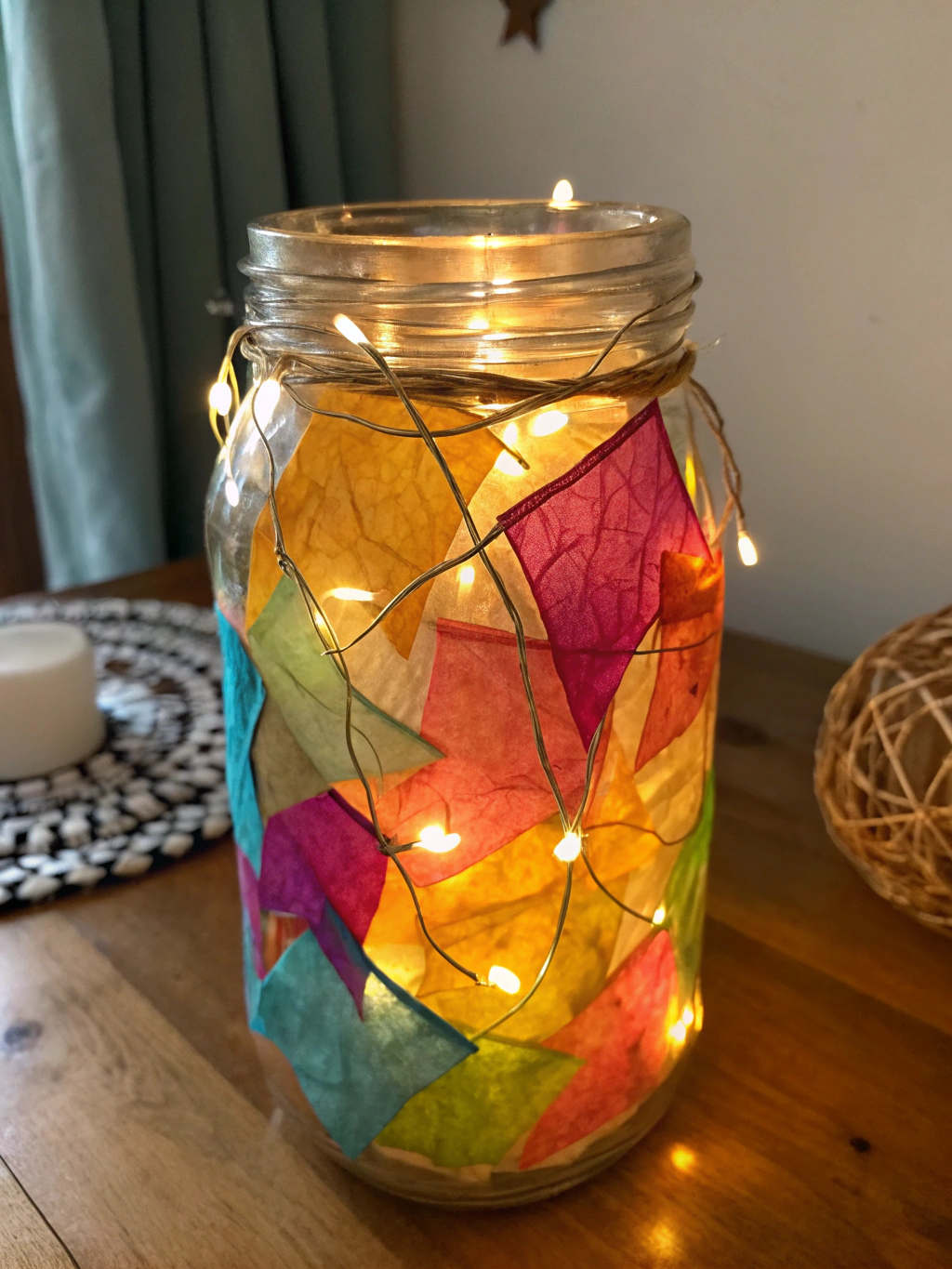
*Caption: Step 1: Clean and prepare your tin cans for their transformation.*
Step 2: Design and Punch Your Pattern
Fill the can with water and freeze it solid. This provides a firm surface for punching and prevents the can from collapsing. Once frozen, use a hammer and nail (or an awl) to punch out your desired pattern. You can draw your design with a permanent marker beforehand or freehand it.
Think about simple shapes, stars, or even letters. The ice supporting the can is key here; without it, you’ll likely dent your can unevenly. A common misstep is using nails that are too large, creating holes that don’t lend themselves well to delicate light patterns.
Step 3: Paint and Illuminate
Once your pattern is complete, let the ice melt and dry the can thoroughly. Now, it’s time to paint! Spray paint offers even coverage, but acrylics applied with a brush work too. Consider a dark exterior color to make the light shine through more dramatically.
After the paint is dry, simply place a tea light or a small LED candle inside. These tin can luminaries create a beautiful, twinkling effect, perfect for garden parties or cozy evenings. Remember to never leave real candles unattended.
Inspiring Idea #2: Magazine Page Coasters
Give old magazines a new lease on life by turning their colorful pages into vibrant, practical coasters. This is another excellent choice for those looking for How to start creative reuse art projects without needing specialized tools.
Step 1: Cut Your Magazine Strips
Select colorful pages from old magazines. Cut them into long strips, about 1 inch wide. The length doesn’t have to be exact, but consistency in width will make coiling easier.
The more colorful and varied your strips, the more interesting your final coaster will look. A common mistake is using paper that’s too thin (like newspaper), which can tear easily during coiling. Glossy magazine paper works best.
Step 2: Coil the Strips
Take one strip and begin to coil it tightly. Once you have a small, tight coil, add a dab of glue to the end of the strip to secure it. Then, take another strip, glue its end to the tail of the first coiled strip, and continue coiling.
Keep the coil tight and flat as you go. This requires a bit of patience, but the result is worth it. If your coil starts to become loose or cone-shaped, gently press it flat as you work.
Step 3: Seal and Finish
Continue adding strips and coiling until your coaster reaches the desired diameter (typically 3.5 to 4 inches). Secure the final strip end with glue. To make your coasters water-resistant and durable, apply several coats of Mod Podge or a clear acrylic sealer, allowing each coat to dry thoroughly.
This sealing step is vital for functionality. Without it, your paper coasters will quickly succumb to spills. Ensure the sealer is fully cured before use.
Inspiring Idea #3: Plastic Bottle Cap Mosaic Art
Don’t toss those colorful plastic bottle caps! Collect them to create stunning mosaic art. This project is fantastic for engaging kids and is a great example of creative reuse art projects that truly highlight the “reuse” aspect.
Step 1: Collect and Clean Caps
Start a collection of plastic bottle caps in various colors and sizes. Wash them thoroughly with soap and water to remove any sticky residue. Let them dry completely.
The more diverse your color palette, the more creative you can be with your design. Sorting them by color beforehand can make the design process smoother.
Step 2: Plan Your Design and Prepare Your Base
Choose a sturdy base for your mosaic, such as a piece of plywood, thick cardboard, or an old picture frame backing. Lightly sketch your design onto the base with a pencil. Simple shapes, animals, or abstract patterns work well.
If your base material is dark, you might want to prime it with a light-colored paint so the cap colors pop. Not planning your design can lead to a haphazard look, though sometimes happy accidents are part of the fun!
Step 3: Glue Down the Caps
Using a strong craft glue (like E6000 or a hot glue gun for quicker adhesion), start attaching the bottle caps to your base, following your sketched design. Work in small sections. Press each cap firmly in place.
Consider the orientation of the caps – top-up or bottom-up can create different textures. For a more filled-in look, you can even glue smaller caps inside larger ones or fill gaps with tiny beads or grout later.
Inspiring Idea #4: Wine Cork Bulletin Board
Save those wine corks from special occasions (or just Tuesday nights!) to craft a stylish and functional bulletin board. This project adds a rustic charm to any office or kitchen.
Step 1: Collect and Prepare Corks
Gather a sufficient number of wine corks. You’ll need quite a few, depending on the desired size of your board. If you want a uniform look, you can cut the corks in half lengthwise using a sharp craft knife (be careful!).
Cutting the corks allows them to sit flush against the backing and gives you twice as many surfaces from the same number of corks. However, using whole corks can create a more textured, three-dimensional effect. Safety first when cutting!
Step 2: Create a Frame or Use a Backing
You can either build a simple wooden frame or repurpose an old picture frame. Alternatively, use a sturdy piece of thin plywood or heavy-duty cardboard as your backing. If using a frame, ensure the corks will fit snugly inside.
Painting or staining the frame before adding corks gives a more polished look. An unframed corkboard (corks glued directly to a backing board that’s then hung) can also look very modern.
Step 3: Arrange and Glue Corks
Begin arranging your corks on the backing or within the frame. You can lay them in various patterns – horizontal, vertical, herringbone, or a mix. Once you’re happy with the layout, use a strong adhesive (wood glue or hot glue) to secure each cork.
Press each cork firmly and allow the glue to dry completely. A common issue is not using enough glue, causing corks to pop off later. Ensure full coverage on the cork’s contact surface.
Inspiring Idea #5: Denim Scrap Quilt or Rug
Old jeans beyond repair? Don’t despair! Denim is a wonderfully durable fabric perfect for creating a rugged quilt, a sturdy rug, or even tote bags. This is a more involved creative reuse art projects, but the results are incredibly rewarding.
Step 1: Collect and Cut Denim
Gather old denim jeans, jackets, or skirts. Wash them first. Then, cut out usable sections, removing thick seams, pockets (unless you want to incorporate them as a feature!), and zippers. Cut the denim into squares or rectangles of a consistent size.
The size of your pieces will depend on your project. For a quilt, 6×6 inch squares are common. For a rag rug, longer strips might be better. A rotary cutter and mat make this process much faster and more accurate.
Step 2: Plan Your Design and Sew (for Quilt/Patchwork)
Arrange your denim pieces to create a pleasing pattern, considering different shades of denim. For a quilt or patchwork item, sew the pieces together using a sewing machine with a denim needle and strong thread. Sew rows first, then sew the rows together.
Press seams open as you go for a flatter finish. If you’re new to sewing, start with a simple design. There are many tutorials online for basic quilting techniques.
Step 3: Finish the Edges (or Braid for Rug)
For a quilt, add batting and a backing fabric, then quilt through all layers and bind the edges. For a rag rug, you could braid long denim strips together and then coil and sew the braid into a circular or oval shape. Alternatively, you can weave denim strips on a simple loom.
Finishing is key to durability. For those looking for “Creative reuse art projects inspiration, Best creative reuse art projects for beginners, How to start creative reuse art projects” with fabric, exploring different finishing techniques on platforms like Sum of their Stories can be very helpful.
Inspiring Idea #6: Old Book Page Art & Decor
Give dated or damaged books a beautiful second act by using their pages for various art and decor projects. From simple wall art to intricate paper flowers, the possibilities are endless. This one deeply resonates with the “art” in creative reuse art projects.
Step 1: Select and Prepare Book Pages
Choose books with interesting fonts, illustrations, or nicely aged paper. Carefully remove pages from the binding. You can use them as is, or antique them further by lightly dabbing with a damp tea bag and letting them dry.
Be mindful of using truly valuable or rare books. The idea is to repurpose books that would otherwise be discarded. Consider the content of the pages if text will be visible in your final piece.
Step 2: Create Your Art – Decoupage, Folding, or Framing
Decoupage: Use Mod Podge to cover items like wooden boxes, trays, or even furniture with book pages.
Folding/Origami: Create paper flowers, butterflies, or geometric shapes.
Framing: Simply frame an interesting page as is, or create collages by layering different pages or adding other elements. You could also cut silhouettes from black paper and mount them on a book page background.
The technique you choose will dictate the next steps. For decoupage, apply a thin layer of Mod Podge to the surface and the back of the paper, smooth it down, and then seal with another coat on top.
Step 3: Display or Gift Your Creation
Once your book page art is complete and dry, find the perfect spot to display it or wrap it up as a thoughtful, handmade gift. These pieces often have a vintage, literary charm.
Protect paper art from direct sunlight to prevent fading. If you’ve made something like coasters, ensure they are well-sealed to protect against moisture.
Inspiring Idea #7: Broken China Mosaic Stepping Stones
Don’t throw away that chipped teacup or broken plate! Turn those sentimental shards into beautiful mosaic stepping stones for your garden. This is a wonderfully cathartic creative reuse art projects that adds personalized charm to outdoor spaces.
Step 1: Safely Break and Prepare China
Wearing safety glasses and gloves, wrap the broken china pieces in a thick towel or cloth and carefully break them into smaller, manageable pieces using a hammer. Aim for pieces roughly 1-2 inches in size, with interesting colors or patterns.
Safety is paramount here. The edges of broken china can be extremely sharp. Avoid creating very tiny, sharp slivers.
Step 2: Prepare Stepping Stone Mold and Concrete
You can buy stepping stone molds from craft stores or use sturdy plastic containers (like plant saucers or cake pans) as molds. Mix quick-setting concrete according to the package directions. Pour the concrete into the mold, filling it about halfway.
Work quickly once the concrete is mixed. Ensure your mold is on a level surface. Lightly tap the mold to release any air bubbles.
Step 3: Arrange China Pieces and Finish Stone
While the concrete is still wet, carefully press your china pieces into the surface, patterned side up. Arrange them in a pleasing design, leaving small gaps between pieces for the concrete to show through (like grout lines). Allow the concrete to cure fully (usually 24-48 hours) as per the manufacturer’s instructions. Once cured, gently remove the stone from the mold.
You can smooth any rough concrete edges with sandpaper once fully cured. If desired, you can later grout the gaps for a more polished look, but it’s not strictly necessary for outdoor stepping stones.
The Final Masterpiece!
Imagine your home and garden, now adorned with unique, handcrafted items that didn’t cost a fortune and kept valuable materials out of the landfill. From the gentle glow of tin can luminaries to the personalized touch of a china mosaic stepping stone, each of these creative reuse art projects offers a chance to express yourself and make something truly special.
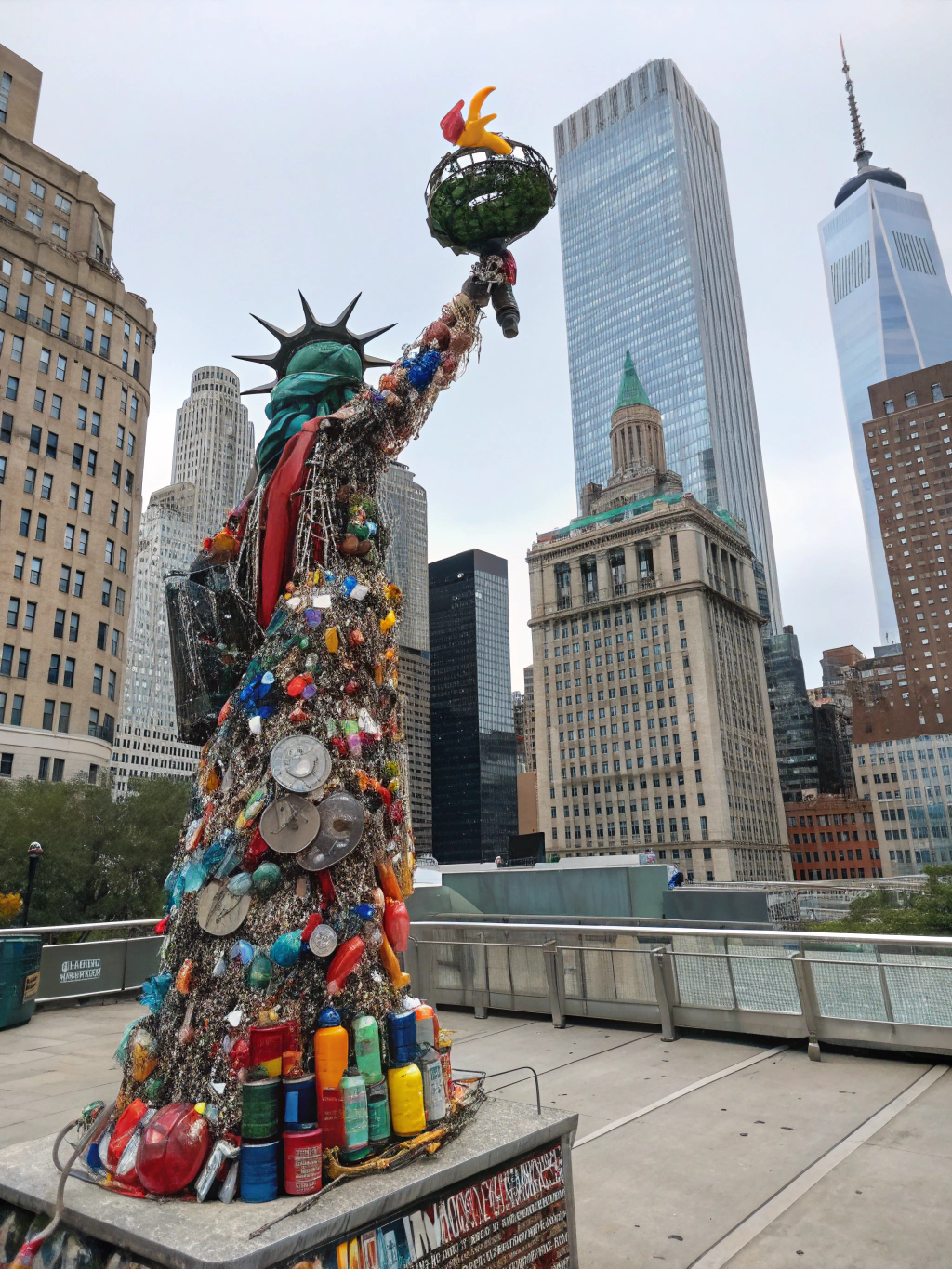
*Caption: Your beautiful, handcrafted creative reuse art projects, ready to admire!*
You’ve not only created art; you’ve participated in a sustainable practice, giving new life to old things. This is the heart of creative reuse. We’d absolutely LOVE to see what you’ve made! Share photos of your finished projects, tips, or even your own project ideas in the comments below. Let’s inspire each other!
Pro Tips & FAQs for Creative Reuse Art Projects
Embarking on creative reuse art projects is an adventure! Here are some extra tips and answers to common questions to help you along the way.
Q1: Where can I find the best “Creative reuse art projects inspiration, Best creative reuse art projects for beginners, How to start creative reuse art projects”?
Aside from blogs like this one, Pinterest is a goldmine for visual inspiration! Also, check out websites dedicated to upcycling and crafting, such as Sum of their Stories, which often features brilliant ideas for all skill levels. Local craft groups or community art centers might also offer workshops or idea-sharing sessions.
Q2: What are the most important safety precautions for creative reuse projects?
Always prioritize safety! Key precautions include:
- Wear safety glasses, especially when cutting, hammering, or working with materials that might shatter or splinter.
- Use gloves when handling sharp objects (like broken china or tin can edges) or harsh chemicals.
- Work in a well-ventilated area, particularly when using spray paints, strong adhesives, or resin.
- Keep a first-aid kit handy.
- If using power tools, ensure you know how to operate them safely and unplug them when not in use.
Q3: How do I choose the right adhesive for my creative reuse art project?
The best adhesive depends on the materials you’re joining.
- Hot Glue: Quick bonding for lightweight materials, good for temporary holds or items not under stress. Not always waterproof or super durable.
- Craft Glue (like PVA/Elmer’s): Good for paper, cardboard, light fabric. Dries clear.
- Strong Craft Glue (E6000, Beacon Fabri-Tac): Excellent for bonding dissimilar materials (metal, plastic, glass, fabric). Flexible, waterproof, and very strong. Needs good ventilation.
- Wood Glue: Specifically for wood-to-wood bonding. Creates a very strong bond.
- Mod Podge: An all-in-one glue, sealer, and finish. Great for decoupage.
- Epoxy Resin or Super Glue (Cyanoacrylate): For very strong, rigid bonds, often on non-porous surfaces. Use with care.
Always read the manufacturer’s instructions for best results and curing times.
Q4: I’m not very “arty.” Can I still do these creative reuse projects?
Absolutely! Many **[creative reuse art projects](https://www.fixdiy.site/diy-mudroom-bench/)**, especially those we’ve highlighted as great for beginners, require more enthusiasm and a willingness to try than innate artistic talent. Start simple, follow instructions, and don’t be afraid to experiment. The beauty of reuse art is often in its imperfections and unique character. The goal is to have fun and create something you enjoy!
Q5: How can I make my creative reuse projects look more polished and less “homemade”?
Attention to detail makes a big difference!
- Cleanliness: Start with clean materials and clean up any glue smudges or paint drips as you go.
- Good Cuts: Use sharp tools for clean, straight edges.
- Even Painting: Apply thin, even coats of paint, allowing proper drying time between coats. Use primer if needed.
- Finishing Touches: Sealing your project (e.g., with varnish or Mod Podge) can give it a professional look and add durability. Sanding rough edges on wood or concrete projects also helps.
- Composition: Think about color combinations and how different elements are arranged. Sometimes less is more.
Let’s Get Crafting!
We hope these 7 ideas have sparked your imagination and shown you the incredible potential hiding in your “recycling.” The world of creative reuse art projects is vast and wonderfully rewarding. Not only do you get to make something beautiful and functional, but you also contribute to a more sustainable lifestyle.
Which project are you most excited to try first? Do you have other favorite creative reuse ideas? Share your thoughts, questions, and your amazing creations in the comments below! Don’t forget to sign up for our newsletter for more DIY inspiration and tutorials delivered straight to your inbox, and share this post with your fellow crafty friends on social media! Happy upcycling!

